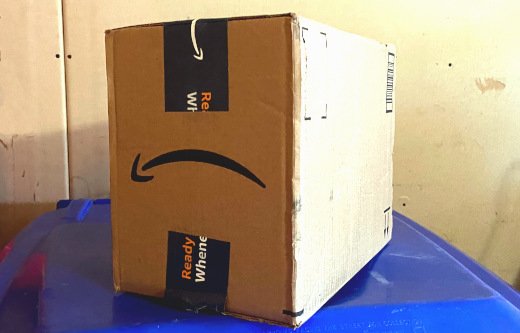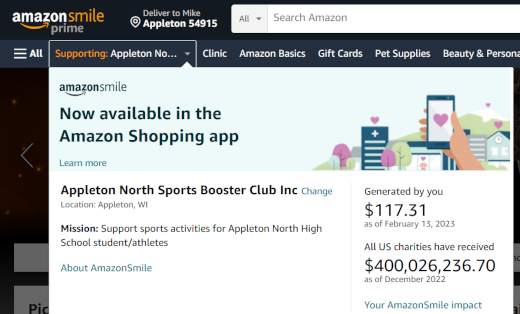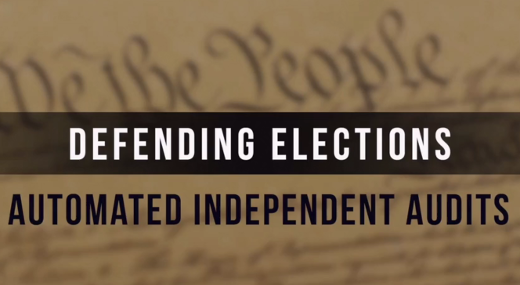Google Domains Shutting Down Not A Second Too Soon

They say, “all good things must come to an end.” Whoever they are, they may have also said “even some not so good things come to an end as well.” The latter will fortunately come true in the form of Google announcing it is getting out of the domain name business and selling their domain registrations to Squarespace.
This news from the Big Tech behemoth came out late in the day on June 15 with little fanfare. I heard about it on a social media post and had to dig to find the press release announcing the deal. Even as of the writing of this post close to a couple of weeks later there is no mention of the deal on the home page of Google Domains. Digging into Google help I was able to find a mention of it. Not surprising to me, there is mention of it on Squarespace’s home page, with a link to a robust welcome page.
If you can tell by my choice of words so far, I think this is a very good thing. Why? Where Google loves collecting information about people, they don’t like dealing with people. You can’t exactly pick up the phone and call Google for support on their end-user consumer products, everything from Gmail to their Web advertising product AdSense. Interestingly on the Google Domains home page it states you can “get 24/7 Google support from real humans” which made me laugh, for as recently as within the last year that was not the case.
Out with the Old and In with the New
In the course of performing my primary income source (aka my job) I deal with many domain registrars, including Google. Many of my clients have had problems with Google domains as the login to the registrar service is integrated with the overall Google login process. Some clients have had turnover in their business and have had issues getting back into their accounts. In one case, a Web site was down for over 2 weeks because of this. No telephone support was available to accept a credit card to renew the domain name and following their automated account recovery process sadly took that long. I’m not sure exactly when they added real humans to the mix, but it is too little too late in my mind, and I have for years been suggesting people use other registrars like Name.com.
Squarespace, on the other hand, is a service designed for the non-technical user, and will likely be a good home for those domain names leaving Google. If you view the landing page I mentioned earlier they have a nice, stylish page welcoming over Google customers and highlighting the services they offer for domains, including reselling Google Workspace. This makes sense, if Google doesn’t like people and Squarespace does, it’s a win-win.
Trust and Track
If you have domain names registered through Google you can leave them there and they will be migrated to Squarespace. However you should watch for emails from both vendors to watch for specific dates and double-check all services using your domain names to ensure they are operating correctly following the move. If you are a little more technical, you may want to capture the DNS settings for each of your domain names in the event there are issues post-migration. You also have the option to transfer your domain names to any other registrar like Name.com that I have personally used for years. Note I have no stake or referral code with Name.com, but they do offer real humans who offer stellar support out of their Denver, Colorado headquarters.
Google Domains is yet another business that the search and more firm has shelved. A nice list is available at Killed by Google which lists all of their former services – some I miss, some I am glad are gone. Google Domains has already been added to the top of the list ahead of their scheduled September, 2023 shutdown.
Deconstructing Google Domains Demise
Internet-based services come and go quite often. Google Domains is one of them, but their door shutting will open a new door for their customers with Squarespace. No matter where your domain name is registered, always update your contact information and payment methods, and keep a list of them and their expiration dates outside of the registrar account for safekeeping of these vital digital assets.
This is from The Hot Iron, a journal on business and technology by Mike Maddaloni.
Did you enjoy this? Subscribe to The Hot Iron by RSS/XML feed or Read by Email
Announcements • Domain Names • Strategize • (0) Comments • PermalinkBreaking A Work Promise To Myself

As the passing of the first third of the year is upon us, I am already breaking one of the 2 promises I made to myself at the beginning of 2023 regarding how I work. It was not a resolution, rather a small behavioral change for me to be more efficient and perhaps even more effective.
That promise was to not take any paper notes and only record things digitally.
Literally Getting Out of Hand
The genesis for this move was an ongoing pile of papers – some small Post-Its, others full notebook pages – that was becoming a bottleneck to reviewing discussions and even completing tasks. I would always have some form of paper at hand to scribble notes and manage priorities throughout the workday. I often found that taking notes by hand was more efficient in being active in meetings, an idea that has been reinforced by other colleagues and articles I have read.
For the most part this cutting out paper worked for me. I would still occasionally print a draft of a document for editing, but after applying those changes to the document file I’d promptly recycle the paper. Several times I consciously stopped myself from trying to write something down, a reaction I was able to curb by simply not carrying a notebook or paper with me. The notes I captured would go directly into my Microsoft OneNote file, which is where the written notes would eventually go as well.
Over time, there was one piece of paper I found that I needed to go back to keeping alongside me throughout the day – my personal dashboard. This is a landscape piece of paper, printed from an Excel file, with columns for projects or areas that I am working on and rows for high-level tasks or issues for each. It’s not a task list per se, rather something I refer to have everything I or my team are working on available at a glance. Thus the term dashboard applies well.
My current dashboard has 7 columns, with the last one being for “personal and professional growth.” It had 6 columns the other day, but as another project came to fruition it warranted its own column. As I am working on multiple projects with my goal to focus blocks of time on one thing at a time and avoid multitasking (as much as I can), the dashboard is a reminder of all else going on in my world.
A Break or a Bend?
Talking with some colleagues about this, there was doubt from them I was actually breaking a promise and instead bending it. To stop consuming paper was not the catalyst of this decision, but it was a nice by-product. However I consider it a break, and until I have a different system – or less going on at once – the dashboard will remain with me as I find it effective.
What was that other promise I made you may be asking? To stop asking people to turn on their cameras in work online meetings! By now, if people don’t want their camera on or realize the benefits to work culture, who am I change their minds? I have also been guilty of not having my own on as much as I used to, especially when I am the only person who turns their camera on for a meeting.
Deconstructing Breaking Promises
Looking back on my earlier decision, where I am somewhat disappointed I was not able to carry through with promise, it has certainly not broken me. Reevaluating earlier decisions or what we do is something we should actually take time out for rather than it be solely reactive and come from frustration or other emotions.
This is from The Hot Iron, a journal on business and technology by Mike Maddaloni.
Did you enjoy this? Subscribe to The Hot Iron by RSS/XML feed or Read by Email
Business • Strategize • Technology • (2) Comments • PermalinkAmazonSmile Shuts Down To The Dismay of Many

On February 20, 2023 and with little fanfare, the AmazonSmile program officially shut down.
For some of you reading this, you may be saying, “really, they shut it down? I had no idea!” For others, you are saying, “what the heck was AmazonSmile?” Allow me to respond to both camps mixed with my opinion of this move.
What it was
Back in 2013, the retail behemoth introduced the AmazonSmile program as a way of giving to charities supported by their customers. For every purchase made by a customer who signed up for the program and visited Amazon with a special link, 0.5% of every purchase of items eligible for AmazonSmile went to a charity who is enrolled in the program.
Those 2 previous sentences are packed with conditions that must have been met for a charity to earn that percentage. First, you the consumer had to sign-up for the program as well as navigate to the link smile.amazon.com – yes, you had to do this, as any purchases made at www.amazon.com would not count. Really. Of course that navigating was done in a Web browser (e.g. Safari, Chrome) and early on purchases made with their mobile app didn’t count. These alone led to many of my purchases not counting towards my contribution.
A charity must also enroll in the program, as you couldn’t just designate the Mike Maddaloni Society of Reflection and Coffee as your charity. Once an organization was accepted, you could choose them as the destination for your half-percent of purchases. You could also change charities at will, as I have done over time. Originally I had my kiddos first school as they were an early adopter of AmazonSmile, but when we moved, I chose their new school. On top of this, there were occasional items that didn’t qualify towards AmazonSmile contributions; I never looked into why this was, as I only saw it infrequently as I shopped their platform.
Why shut it down?
I first heard about the shutdown in a roundabout way, and with some searching I found this official announcement on Amazon’s corporate blog. Interestingly, I never received an email on this, but I digress. In smaller circles I saw news stories on it, such as this article from the Associated Press that quoted Amazon spokespeople as well as charities impacted by this. But by and large, this passing went by without much attention.
I’ll let you read both of those linked stories above, but I will share my interpretation of what happened. A quote from an Amazon spokesperson said they were making a “strategic shift” and those 2 words also pack a lot. First off, Amazon doesn’t need a program like this – after the lockdowns over the past few years, people’s shopping habits have moved more and more virtual with Amazon being a major beneficiary of this. With their recent layoff announcements, they and many other companies are cutting back and an assumption that they are cutting this simply to reduce overhead costs isn’t an unfair assumption. Plus a CEO handing a giant Happy Gilmore-style check to an equally giant charity makes for better public relations than an anonymous check arriving in the mailbox of a needy charity. Blend in global inflation and recession and all of this is only amplified.
Define impact
Learning about this a mere few days before the program closed and disappeared from their Web site, I decided to take a look at my own impact, which you can see in the screenshot below:

As you can see, in the almost half decade I was using AmazonSmile, my family and I helped raise a whopping $117.51 for charities. Not a lot, eh? But again we are merely one shopping family with the previously-mentioned caveats.
Another way to look at this is in a glass half full way; as AmazonSmile is going away, enter local distribution centers and delivery in your area and the jobs that come with this. Though to some charities it may be a slap in the face to see an Amazon truck driving through a neighborhood that is losing a quarterly charity donation from its owner. Where one economic door closes, another opens.
Speaking of economics, one way to express your disappointment with this move by Amazon is to shop elsewhere. Granted the convenience of throwing things into your cart and ordering whenever is not to be dismissed, but many of the items you are shopping for may be available in local stores you likely have forgotten about. Check them out – you may be pleasantly surprised.
How do you feel about AmazonSmile’s departure? I welcome your comments to this blog post at thehotiron.com.
This is from The Hot Iron, a journal on business and technology by Mike Maddaloni.
Did you enjoy this? Subscribe to The Hot Iron by RSS/XML feed or Read by Email
Business • Strategize • (0) Comments • PermalinkShutterfly Serendipity and Solicitude

Back in November 2022 I got an email from photo products company Shutterfly that starting in the new year customers were required to place orders every 18 months in order to store photos on their platform. Not knowing what I had stored with the service, I logged in found a couple of dozen photos from over the years. I downloaded them and then deleted my long-inactive account.
In the process of doing so, I found I had another Shutterfly account, one tied to an email address I wasn’t even using anymore. Upon dusting off that email and logging into that account, I found I had a few more images stored there – 3,283 to be exact. Yes, over three-thousand images I had clearly forgotten about. After some intense eyebrow-knitting, I remembered why they were there: in 2011 film processing service PhotoWorks.com shut down and allowed all images stored online to be transferred to Shutterfly, which I apparently did. And there they were for all these years.
What the Film?
Prior to the almost-purely digital age of photography we live in, there were film cameras. In the 1990’s I learned about a company called Seattle FilmWorks, where you could mail in your film for processing and get back paper prints, your negatives and a floppy disk with digital images of your photos. This was a game-changer for me, and I became a loyal customer. Over time they rebranded to PhotoWorks.com, and eventually shut down. But by that time, I was already using a digital camera and eventually my mobile device for photography.
The digital images provided by Seattle FilmWorks were in a proprietary format that could only be viewed and extracted into a non-proprietary format with software they provided. Over time I did this for many of the images, but not all, and I still have the digital files archived from those original floppy disks. That being said, the resolution of the original images was rather small; on average an image was only 768 x 512 pixels, where today an average image from my iPhone is at least 5 times that size.
Nonetheless I downloaded all of the images from Shutterfly and deleted that second account. As one my guess, the process of downloading over 3,000 of anything is a workload, and this was no different. On top of it, all of the images were in one giant folder and not organized by their corresponding roll of film as they likely were at PhotoWorks. For backup purposes I wanted them all, though eventually I will likely digitize the negatives to more modern dimensions. The accompanying picture with this post is one of those pictures – taken years ago along the trail between Lexington and Concord, Massachusetts where my then-girlfriend (now wife) and I came by a couple of American Revolution re-enactors. Our pleas to them to not shoot us didn’t humor them, but they did pose for this picture.
Where the fancy word for concern comes in
As I mentioned, I deleted both accounts with Shutterfly. Nothing personal to them, but I can’t recall a time when I ever ordered from them – there was no order history in either account. If I ever want to in the future, I am sure I can create a new account. This maintenance was part of managing my external digital presence, or footprint as it is often called.
Over time I review the massive list of accounts I have with online services. If it’s a service I use often, I will periodically reset the password. If it’s one I don’t use at all, I will try to delete it – I say try as some services don’t give the option. Sometimes when I try to login to an account, the service is gone altogether, and then I just strike it from my list. This periodic maintenance is necessary, but something I am not as diligent with as I would like to be, not to mention something most people don’t do at all. Where this doesn’t keep me up at night, it is something I am concerned about.
So what else of mine is out there, waiting for me to reclaim it? What else of yours is out there too?
This is from The Hot Iron, a journal on business and technology by Mike Maddaloni.
Did you enjoy this? Subscribe to The Hot Iron by RSS/XML feed or Read by Email
Strategize • Technology • (0) Comments • PermalinkDefending Elections With Technology
As I write this post, it is almost 2 weeks after the 2022 US midterm elections. There are still races that have not been certified, ballot recounts in process and along with them a multitude of news headlines and speculation as to why all of this is happening. Outside of the news outlets and municipal halls, rumors and doubts circulate. Of course there are more races that have been tabulated and certified with candidates declaring victory and their opponents conceding, yet those contests are not the “breaking news” as those still outstanding.
But does that have to be the case? Can ballots be counted and confirmed with confidence and within a reasonable amount of time to not cast a shadow on the overall process? The answer is yes, as this is already being done and has been done for years thanks to a sophisticated technology solution that isn’t getting headlines like it should.
Making Voter Intent Clear
Several years ago I had the good fortune of working with Larry Moore at a firm he was leading. At that point he was already a tech pioneer and visionary. His door was always open when I had a question or challenge and he was able to help me see things from aspects I hadn’t even considered. Later we later reconnected and I learned about technology he envisioned and with a great team brought to life to help solve the issue of voter intent and integrity. The company he founded was Clear Ballot and the technology involves scanning paper ballots and using advanced software to count both votes and voter intent. Think of how a ballot looks and if someone didn’t fill in an oval correctly or maybe circled the name instead of filling in the pesky oval, and this is what the software helps determine, with human reviewers, to properly audit an election.
Even as I re-read what I just wrote I know I am not giving this proper justice. Fortunately Larry recently produced a video where he describes the problem most are aware of and the solution most are not. The video “See the Vote - Fight Disinformation” is embedded below or click here to watch the video on this voting technology.
Deconstructing Defending Elections
It is beyond cliché to say how technology has positively impacted out lives. However as a result of issues with voting and certifying elections over the years, the prevailing thought of paper ballots and hand-counting, with all of their own challenges, has been the direction to insure elections are fair and accurate. I hope this video shed light on how technology has, can and will be a positive force in election integrity.
This is from The Hot Iron, a journal on business and technology by Mike Maddaloni.
Did you enjoy this? Subscribe to The Hot Iron by RSS/XML feed or Read by Email
Strategize • Technology • Thrive • (0) Comments • Permalink

